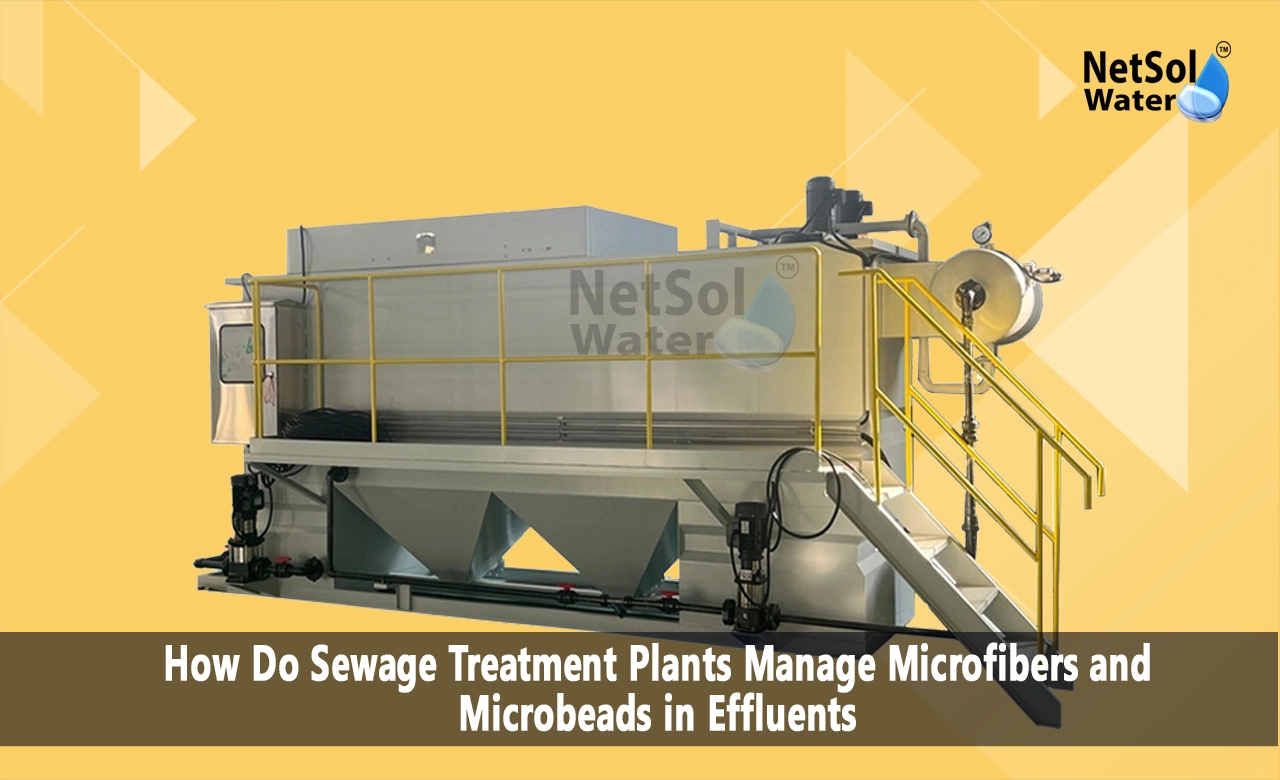How Do STP Plants Manage Microfibers and Microbeads in Effluents?
Sewage treatment plants are facing a new challenge due to the growing concern about microplastic pollution. Synthetic fibres and tiny beads from clothing, personal care products, and other sources pass through treatment processes and end up in effluent streams. These particles pose a risk to aquatic life and food chains. While upgrading to tertiary treatment can help capture more microplastics at municipal facilities, there is no one-size-fits-all solution. Plants must use a combination of advanced filtration and source control measures to reduce the amount of microfibers and microbeads entering their influent flows. This will help to protect ecosystems and the creatures that depend on them.
We examine innovative methods sewage treatment plants deploy across different stages to manage their microplastic burdens effectively.
Primary Treatment
Sewage plants work on improving their primary treatment process to better capture microplastics. They do this by enhancing grit removal and dissolved air flotation processes, which can remove significant amounts of fibres and microbeads before the biological treatment process begins. Supplementary froth spray and skimming techniques further purge microplastic accumulation in primary clarifier tanks. Adding specialised chemistries like cationic polymers coagulate clumps of microparticles for easier settling, too. These straightforward equipment and process upgrades achieve a quick initial reduction in microplastic loadings.
Membrane Filtration
While conventional activated sludge was never intended to separate microfibers and microbeads, membrane bioreactors (MBRs) provide a robust barrier using ultrafiltration membranes. Most microplastics larger than 0.1 microns get physically rejected from the effluent permeate by MBR membranes. Some plants further polish MBR permeate using microfiltration or tight nanofiltration systems to capture even smaller microplastic particles. The high removal efficiencies of these membrane processes make them powerful tertiary barriers – especially for challenging sources like residual microfibers from synthetic clothing laundering. However, plants must diligently manage membrane fouling issues.
Advanced Oxidation Degradation
While physical separation helps, advanced oxidation processes (AOPs) enable the degradation of microfibre and microbead microplastics into simpler molecules. The hydroxyl radicals generated through AOPs like ozone/UV treatment, electrooxidation or catalytic wet air oxidation attack and mineralise microplastic polymer chains. When coupled with membrane systems, AOPs create a formidable serial treatment barrier. Microplastics first get concentrated in membrane reject streams, allowing downstream AOPs to target their degradation far more efficiently rather than treating dilute influent. Plants can then optionally recycle the treated effluent for reuse instead of direct discharge.
Microplastic Monitoring and Research
Sewage facilities are rapidly implementing microplastic detection and monitoring capabilities to quantify microplastic removal performance and pinpoint influent microfibre/microbead sources. Automated online sensors incorporating laser spectroscopy track microplastic levels at various stages. Plant influent and sludge streams get routinely sampled and analysed too using techniques like micro-FTIR spectroscopy and mass spectrometry. This abundance of data supports microplastic fingerprinting studies isolating dominant sources, modelling microplastic fate during treatment, and driving mitigation research. As microplastic regulations emerge, monitoring ensures compliance.
Proactive Source Control Initiatives
While treatment process enhancements address microfibre and microbead threats, source control projects complement them by preventing microplastics from entering sewers initially. Treatment plants actively promote consumer behaviour changes, discontinuing microplastic product usage through awareness campaigns. Simultaneously, facilities collaborate with universities and local businesses on initiatives capping microplastic discharges. These range from microfibre capture equipment on laundry machines to textile recycling programs reducing microplastic shedding. Wastewater utilities are establishing their own regulatory frameworks and discharge permitting systems targeting microplastic contributors.
Conclusion
With the global microplastic pollution crisis intensifying, sewage treatment facilities can no longer let minuscule microfibers and microbeads slip through their processes unabated. These synthetic particulates represent an emerging environmental threat with still unknown health and ecological impacts. Fortunately, plants are deploying various innovative treatment process upgrades to mitigate their microplastic discharges as the first line of defence. Enhancements span mechanical separation using advanced membrane systems, degradation via advanced oxidation processes, and proactive monitoring with detection instruments. Optimising primary sedimentation and dissolved air flotation also reduces initial loadings.
In parallel, sewage facilities are pursuing multi-pronged source control strategies targeting major microplastic influent sources like laundry, industrial discharges and personal care products. These initiatives encompass public outreach campaigns, regulatory restrictions and technological solutions in partnership with municipalities and businesses. While a universal microplastic treatment solution remains elusive for now, sewage treatment plants are actively pioneering these comprehensive multi-barrier schemes to protect the environment.
To explore customised commercial RO plants, Industrial RO plants, ETP or STP solutions for your needs in your areas and nearby regions, contact Netsol Water at:
Phone: +91-965-060-8473, Email: enquiry@netsolwater.com



